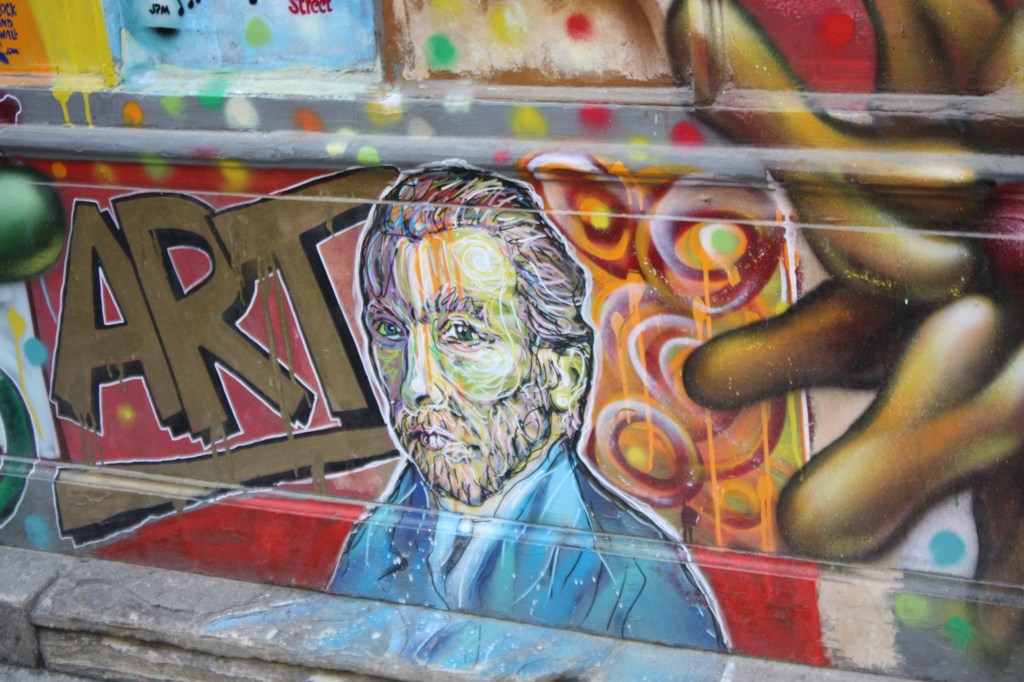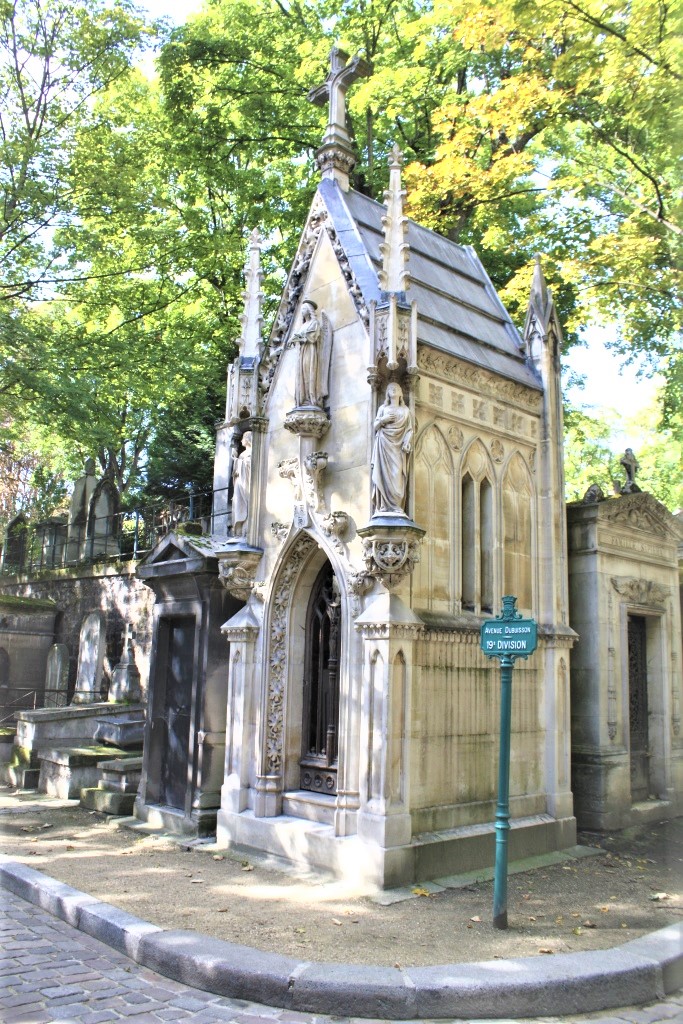
(R) Russell, John Peter. 1886. Vincent van Gogh. Amsterdam: Van Gogh Museum.
The untold “female” history of Chloe, the nude artwork by French artist Jules Joseph Lefebvre, was the inspiration for my doctoral project, and a new novel-length work of historical fiction. This beautiful painting, which has hung at Young and Jackson Hotel in Melbourne for over a century, has been igniting the imagination of admirers ever since its first unveiling in the Australian colonies at the Sydney International Exhibition in 1879.

Melbourne: Young and Jackson Hotel.
Photograph: Peter Nicholson.
During my research into Chloe’s history, and the source of myths about the Parisian model who sat for the painting, I became immersed in the volatile political climate in France during the period of Chloe’s creation. I was also fascinated with the artists, writers and musicians who revolutionised the cultural landscape of late-nineteenth-century Paris. Edouard Manet and Edgar Degas were among the artists who regularly gathered at the Café Nouvelle Athenes in Montmartre, and the young Irish writer George Moore was ‘astonished’ when Manet, an artist he idolized, asked Moore if he could paint his portrait (Frazier 2000, 57).

New York: The Met.

By the early 1880s, Vincent van Gogh was a regular patron of the Café Nouvelle Athenes. But in the early stages of Chloe’s creation, 21-year-old Vincent worked as an attendant at the Parisian headquarters of Goupil and Cie art gallery. Vincent’s Uncle Cent (Vincent) was a partner in the five-story gallery, a ‘grand empire recherche style’ mansion (Naifeh and Smith 2011, 103) https://twitter.com/vangoghthelife located at 9 Rue Chaptal, only two blocks away from Jules Lefebvre’s studio on Rue de la Bruyere.

(Vincent van Gogh Foundation)
The Goupil and Cie gallery ‘commissioned reproductions of work by the most important contemporary French artists’ (Verhoogt 2007, 144), and it was Goupil’s who prepared the photogravure and reproductions of Chloe for the 1875 Paris Salon (British Museum).


Following a second brief stint at Goupil’s in London, Vincent returned to the gallery’s Paris headquarters in time for the 1875 Paris Salon. In a letter to his brother Theo, written on a Goupil and Cie Paris letterhead, Vincent praised a picture he had viewed at the Salon by the French peasant painter and poet Jules Breton:
He has a beautiful painting at the Salon, ‘The Feast of St John’, peasant girls dancing on a summer evening round the St John’s bonfire, in the background the village with its church and the moon above it.
(Van Gogh [1875a] 2009) http://vangoghletters.org/vg/

Philadelphia: Philadelphia Museum of Art.
Vincent greatly admired Jules Breton’s work, particularly Breton’s paintings of Brittany, and in the same letter to Theo, he promised to send his brother a copy of Les Champs et la Mer, a collection of Breton’s poetry. Around the same time, Vincent wrote a personal letter to Breton in Courriers, sharing the story of a man, who, after living in England for 25 years, had returned to France to end his days:
He loved France, Brittany especially, and nature, and he saw God in it; for that reason you should mourn him as a brother, that is why I am telling you about this life of this ‘stranger on earth’ who nevertheless was one of its true citizens. Farewell, Sir, think of him sometimes.
(Van Gogh [1875b] 2009) http://vangoghletters.org/vg/
The letters Vincent wrote in Paris between 1874 and 1876 were like an imaginary museum. They allowed me to:
See what he saw, experience the way—as a young art lover . . . he learned from the art of predecessors and contemporaries.
(Ruger and Wals 2009) http://vangoghletters.org/vg/
Vincent described the art prints he was collecting in meticulous detail, and he transcribed poems which had moved him. In a letter dated 6 July 1875, he told Theo about his home in Montmartre with its ‘little garden full of ivy and Virginia creeper’ (Van Gogh [1875c] 2009), and among the list he included of his latest prints, was a painting by Rembrandt titled Reading the Bible ([1875c] 2009).

Vincent was deeply religious during this period, which may explain why he ‘never mentioned a word about Impressionism’ (Naifeh and Smith 2011, 103). Monet, Degas and Renoir and ‘a rebellious cadre of young painters’ (2011, 102), had the Parisian art world in an uproar, and at an auction of their colourful daubs, the gendarmes had to be called to prevent the event descending ‘into fistfights’ (2011, 102-103).

Paris: Musee Marmottan.
Sensitive and socially awkward Vincent was ill-suited to gallery life, so much so, he was given the unflattering sobriquet ‘ce Hollandais rustre’ (that Dutch rube) by the well-heeled women who came to purchase artworks at the elite Parisian gallery. Lonely and homesick, Vincent became obsessed with ‘the strange, sombre works of Matthijs Maris’ (2011, 112-113), a Dutch painter and former Communard who lived close to his lodgings in Montmartre. As an antidote to his loneliness, Vincent would go for endless walks through Paris, and he developed a fascination with cemeteries (2011, 113). It was this intriguing detail about Vincent’s behaviour which led me to create a scene in my “Chloe” historical novel where Vincent discovers Marie, Chloe’s model, sleeping in a mausoleum at Montmartre cemetery.

As mentioned earlier, between 1874 and 1875 Vincent worked at the gallery that produced prints of Chloe for the Paris Salon. Considering Goupil and Cie’s close proximity to Jules Lefebvre’s atelier, I could easily picture this lonely young Hollander and the artist model for Chloe, crossing paths in the streets or cafes of Montmartre during the period of Chloe’s creation. There were many moments when I was creating my “Chloe” manuscript, when it felt like I was writing a dream (Cochrane 2018). Not only the dream that inspired the novel, but a dream that had emerged from the ‘dark book of history’ (Gadamar 1975,156), as I filtered and reimagined all that I had learnt about Jules Lefebvre’s Chloe, and wrote a life onto the page for the “voiceless” woman he immortalised in his enigmatic artwork.
References
British Museum, London. www.britishmuseum.org/research/collection_online/search.aspx?searchText=Chloe+/+Salon+de+1875
Cochrane, Peter. 2018. “Peter Cochrane: The Making of Martin Sparrow.” Interview by Claire Nichols. The Hub on Books, June 12, 2018. Audio, 10:05.
Frazier, Adrian. 2000. George Moore 1852-1933. New Haven and London: Yale University Press.
Gadamer, Hans-Georg. 1975. Truth and Method. New York: Seabury Press.
Naifeh, Steven, and Gregory White Smith. 2011. Van Gogh: The Life. New York: Random House.
Ruger, Axel, and Henk Wals. 2009. “Foreword.” Vincent van Gogh: The Letters, Volume One. London: Thames and Hudson.
Van Gogh, Vincent. (1875a) 2009. “Paris, Monday, 31 May 1875 to Theo van Gogh.” In Vincent van Gogh: The Letters, Volume One, translated from the Dutch by Lynne Richards, John Rudge and Dianne Webb, edited by Michael Hoyle. London: Thames and Hudson.
———. (1875b) 2009. “RM05 Pages sent to Theo with a Story Addressed to Several Writers and Sundry Quotations. Between May and June 1875.” In Vincent van Gogh: The Letters, edited by Leo Jansen, Hans Luitjen, Nienke Baker. Amsterdam and the Hague: Van Gogh Museum and Huygens ING.
———. (1875c) 2009. “Paris, Tuesday, 6 July 1875 to Theo van Gogh.” In Vincent van Gogh: The Letters, Volume One, translated from the Dutch by Lynne Richards, John Rudge and Dianne Webb, edited by Michael Hoyle. London: Thames and Hudson.

Hi Katy
Excellent, fascinating piece of artistic detective work.
Looking forward to the novel!
Best wishes
Bill Egan
LikeLike
Thanks so much, Bill. It was a thrill tracing Vincent’s footsteps through the streets of Montmartre, and learning about his younger life, before he picked up a paintbrush. Cheers, Katy
LikeLike
What a treasure trove this post is. Van Gogh is my favorite painter. Thanks!
LikeLike
Thank you, Norbert! I am thrilled you enjoyed the post. Van Gogh was an amazing artist and epistolarist. His acute observations, in paint and words, are a timeless gift to all lovers of creativity.
LikeLike